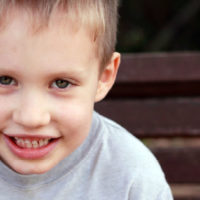Research digest
-

Expressed emotion varies with eating disorder diagnosis
Unique patterns of expressed emotion characterize communication within families with children affected by eating disorders, according to new research. Researchers across the USA recruited 215 adolescents (aged 12-19 years) with eating disorders and their families, and asked them to complete the Standardized Clinical Family Interview.
Read more -

Machine learning approach predicts suicide risk
A study has evaluated the performance of machine learning on routinely collected electronic health records, as a possible approach to accurately screen and detect adolescents at risk of making suicide attempts.
Read more -

Violent self-harm may predict subsequent suicide
Researchers in Sweden have found that violent methods of self-harm requiring hospitalization may indicate high risk of future suicide in adolescents and young women.
Read more -

Navigating an unfamiliar world: how parents of young people that self-harm experience support and treatment
Participants described a range of reactions to treatment and support for themselves and the young person. We identified three main themes: attitudes towards the young person, practical aspects of help and the need for parents to be involved.
Read more -

Suicide risk in the young: what, how and who to study
Suicide is the second leading cause of death in children and adolescents and occurs at a higher rate in this population than in any other age group.
Read more -

The family environment mediates risk of self-harming
Non-suicidal self-injury (NSSI) constitutes any deliberate physical injury to oneself that is not life-threatening. It is a behaviour that commonly starts during adolescence. Childhood family adversity (CFA) is associated with NSSI, but the risk pathways between CFA and NSSI are unclear.
Read more -

Clinical characteristics of adolescents referred for treatment of depressive disorders
Low mood and depression often emerge during adolescence and are associated with long-term difficulties including increased risk of developing other mental health disorders, educational underachievement, low income/unemployment, and risk of suicidal behaviour.
Read more -

Self-Harm & Suicide Issue – Foreword from the Editor
As a clinician, it certainly does feel that more and more young people are being referred, following self harm or with suicidal ideas, to the CAMHS service I work in. This nationwide increase in numbers is acknowledged in recent government reports, which are summarised in this edition.
Read more -

Autism & Intellectual Disability
This edition of the Bridge is on Autism & Intellectual Disability.
Read more -

The origins of fussy eating in young children
As young children make the transition from a solely milk-based diet to a ‘family diet’, they are gradually introduced to increasing numbers of foods. While some children happily accept novel flavours and textures and enjoy widening their dietary repertoire, many are hesitant or even suspicious about trying new foods.
Read more